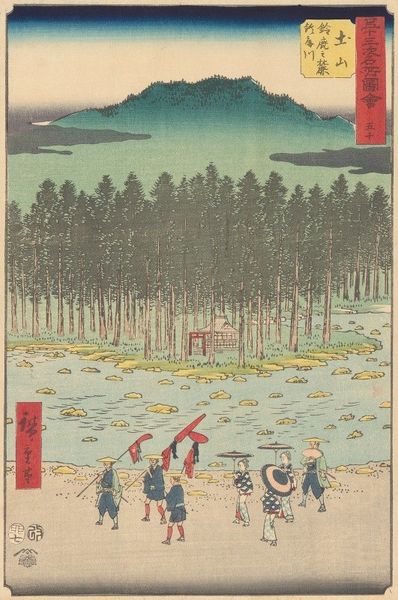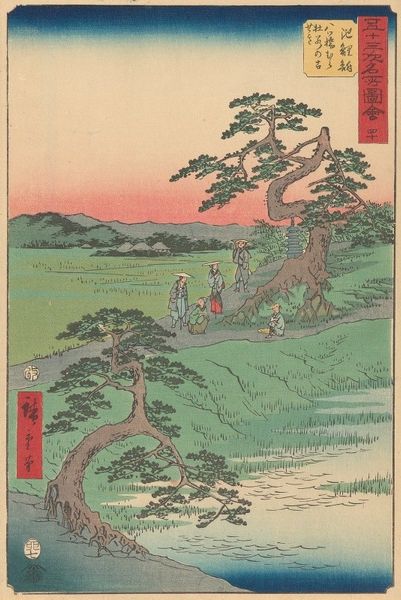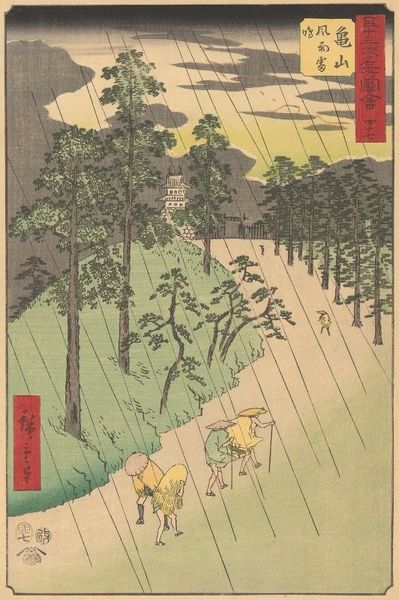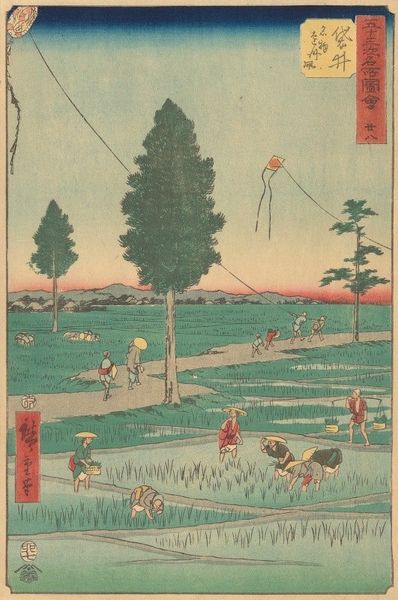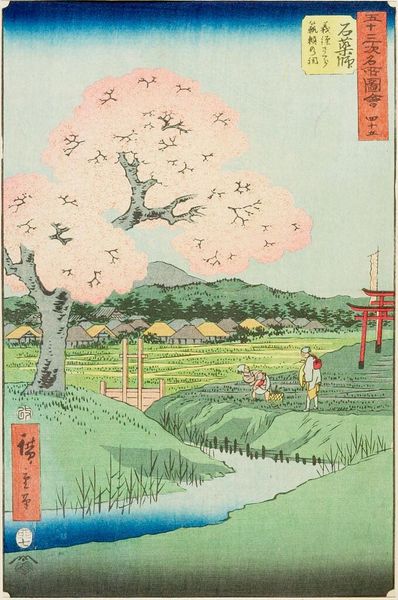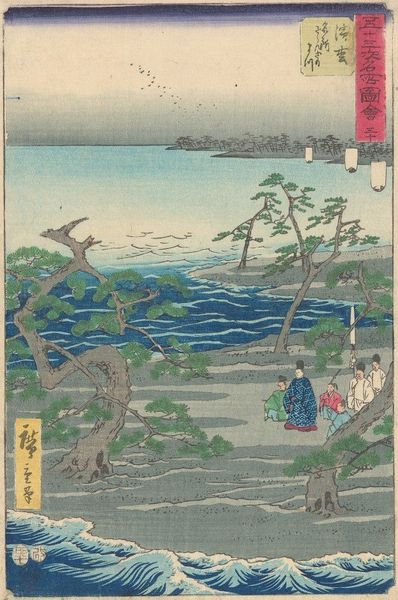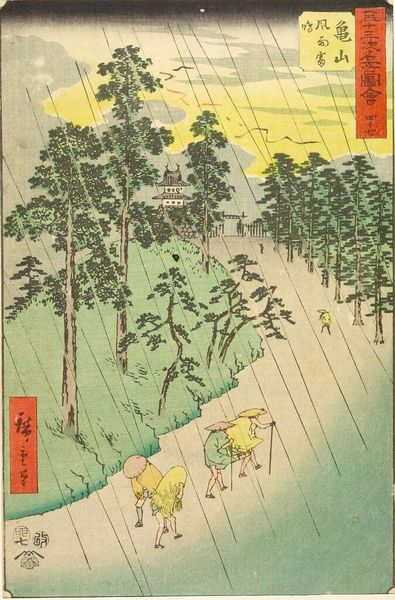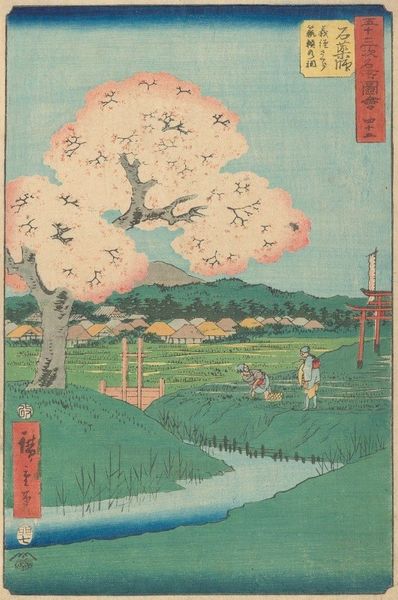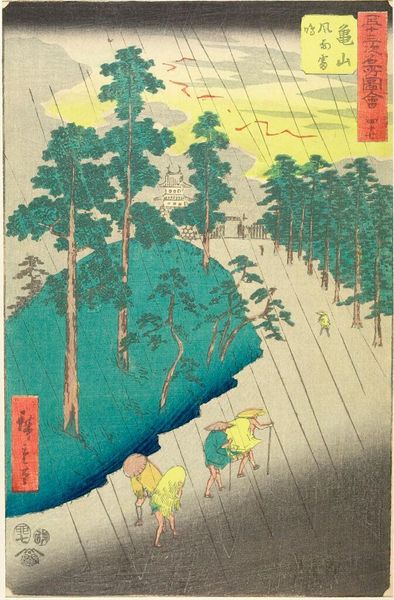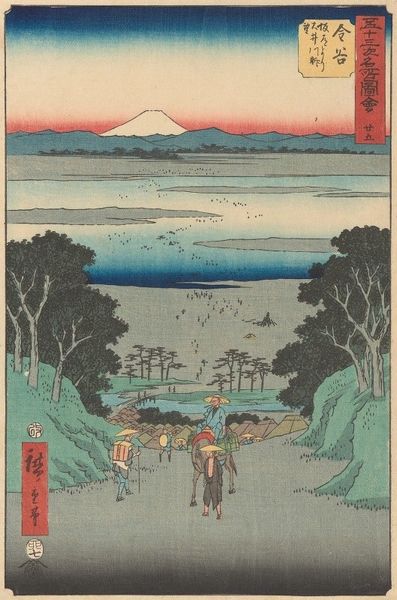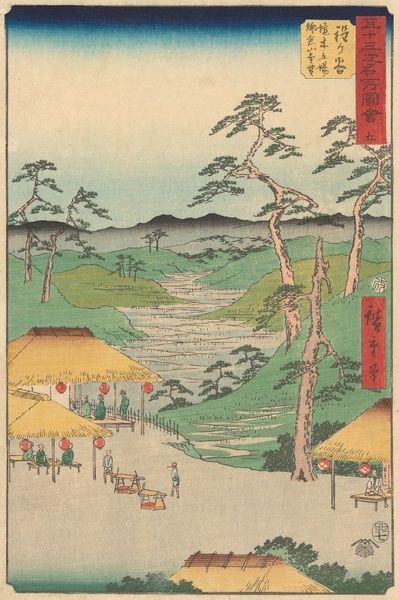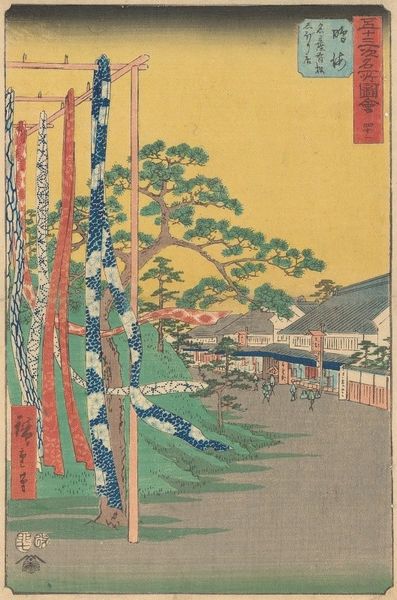
print, woodblock-print
# print
#
asian-art
#
landscape
#
ukiyo-e
#
woodblock-print
#
watercolor
Copyright: Public Domain: Artvee
Curator: Let's discuss Utagawa Hiroshige's woodblock print, Akasaka, created around 1855. The pale, almost nocturnal, palette is what strikes me first. Editor: Yes, there is a pervasive sense of calm that comes through in Hiroshige's limited color scheme. I'm curious, what sort of paper was he printing on? It seems incredibly smooth. And what dyes did he likely have access to, that create this somber blue? Curator: These types of prints were produced through a complex division of labor—someone carved the blocks, someone printed them. As a work for consumption, it relies heavily on the relationship between artisan and customer, with the artisan’s skills judged in the marketplace. The visual result is so clean! Editor: Absolutely. Beyond its material existence as ink on paper, the composition itself is striking. The curve of the road pulls your eye, leading it into the receding plane toward those small figures in the background. How would you interpret their presence? Curator: It speaks to the social realities of travel in the Edo period, with commoners on foot and presumably a porter, the realities of which this artisan likely partook in or at least saw everyday, informing his subject matter, as he depicts the movement and transport that marked the era. These are the materials that made a narrative, made possible by those actual woodblocks and the skilled laborers operating within specific markets! Editor: That context enriches the piece immensely. To my eyes, there’s an emotional balance being struck here between the natural world of the rice paddies and tall trees, and those indicators of human activity: the travelers and the village at the vanishing point. What kind of statements was Hiroshige making here, about the tensions of humans against or in concert with nature, if any? Curator: It’s difficult to assert clear "statements" with these Ukiyo-e prints, which were so widely commercial. It shows the integration of society and nature through common travel; we, and by extension, the artisan, are not separate from the land, we tread on it to continue our labors. Editor: This print makes me reflect on the ability of seemingly simple techniques to achieve powerful artistic ends. Thanks for contextualizing! Curator: And thank you for examining the formal structure—both necessary elements when viewing Akasaka, I think.
Comments
No comments
Be the first to comment and join the conversation on the ultimate creative platform.
